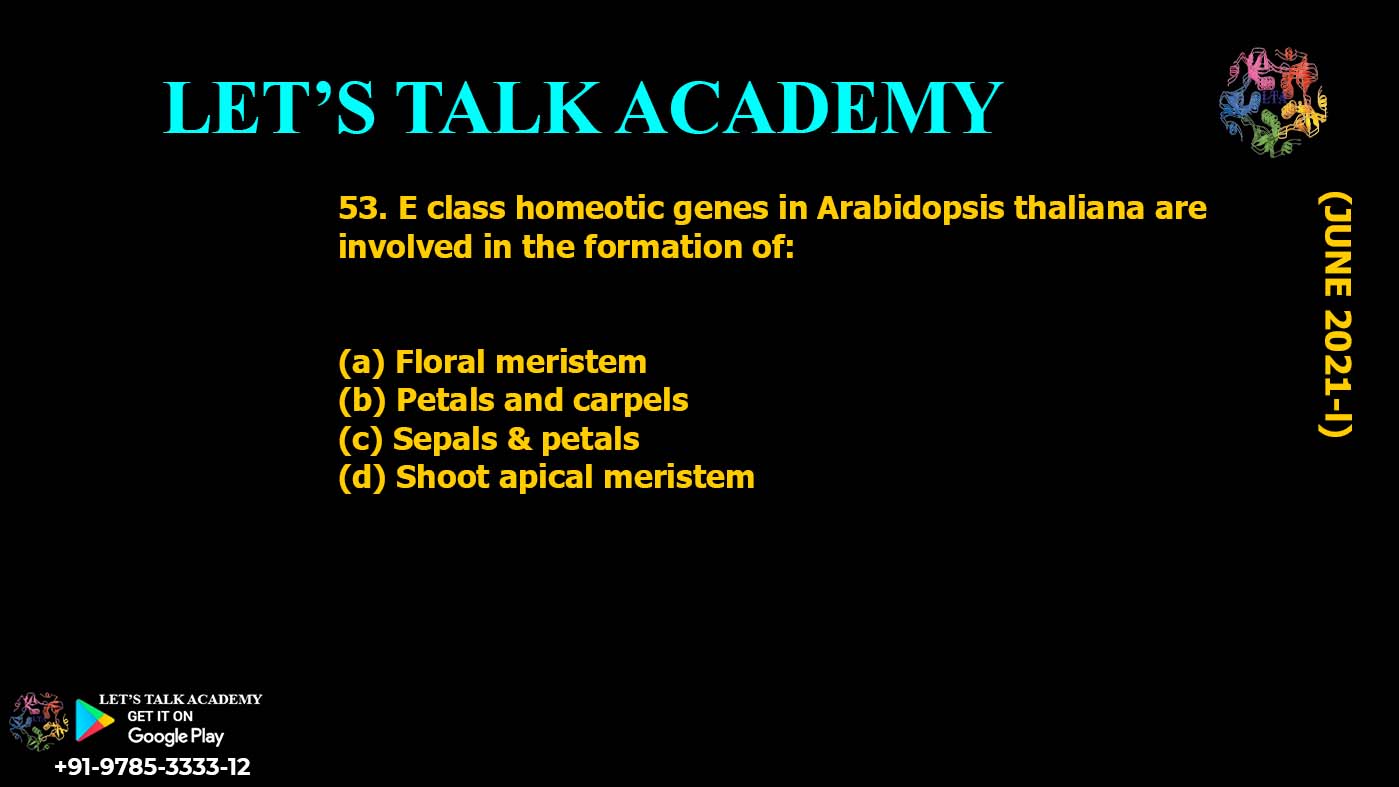53. E class homeotic genes in Arabidopsis thaliana are involved in the formation of:
(a) Floral meristem
(b) Petals and carpels
(c) Sepals & petals
(d) Shoot apical meristem
Introduction
Arabidopsis thaliana, a model plant organism, has been crucial in studying plant genetics and development. One of the key players in regulating plant development is the homeotic gene family, which controls the formation of various plant organs. Among these, the E class homeotic genes are pivotal in floral development. These genes play a critical role in the patterning of flowers and the proper formation of floral organs. In this article, we’ll dive into the function of E class homeotic genes in Arabidopsis thaliana, focusing on their involvement in flower formation.
Homeotic Genes in Arabidopsis thaliana
In Arabidopsis thaliana, the formation of floral organs is regulated by several classes of homeotic genes. These genes determine the identity of the various parts of the flower, such as sepals, petals, stamens, and carpels. The ABC model of floral organ identity is one of the fundamental frameworks for understanding how these genes work.
-
Class A genes: Regulate the formation of sepals.
-
Class B genes: Responsible for the formation of petals and stamens.
-
Class C genes: Control the formation of stamens and carpels.
The E class genes are required for the overall floral organ identity and function in combination with other classes to specify the correct floral parts.
Role of E Class Homeotic Genes
The E class genes in Arabidopsis thaliana, primarily APETALA 1 (AP1), APETALA 2 (AP2), and other related genes, are essential for maintaining floral meristem identity and for the development of floral organs. These genes are involved in the transition of the shoot apical meristem (SAM) into a floral meristem, a critical process for flower development.
These genes help to:
-
Establish the floral meristem.
-
Specify organ identity through interactions with the A, B, and C classes of genes.
-
Contribute to the development of petals, sepals, and other floral organs.
Thus, the E class genes play a significant role in maintaining the identity and development of the entire floral structure in Arabidopsis.
Analyzing the Options
-
(a) Floral meristem: E class genes are indeed involved in the formation and maintenance of the floral meristem, which is crucial for the development of flowers.
-
(b) Petals and carpels: While E class genes contribute to floral organ development, they are not specifically responsible for the formation of petals and carpels alone. This function involves interactions with other homeotic gene classes like A, B, and C.
-
(c) Sepals & petals: E class genes help establish floral identity, which includes the development of sepals and petals, but they are not solely responsible for these organs’ formation.
-
(d) Shoot apical meristem: The shoot apical meristem is responsible for the overall growth of the plant, but the E class genes are more directly involved in the transition of this meristem into a floral meristem rather than regulating its overall function.
Conclusion
The correct answer is (a) Floral meristem. The E class homeotic genes in Arabidopsis thaliana are primarily responsible for maintaining the floral meristem, which is essential for proper flower development.
Correct Answer: (a) Floral meristem




4 Comments
Vikram
April 19, 2025🪷🏻
Vikram
April 19, 2025✋
Akshay mahawar
April 22, 2025Done 👍
yogesh sharma
May 7, 2025Done sir 👍✅